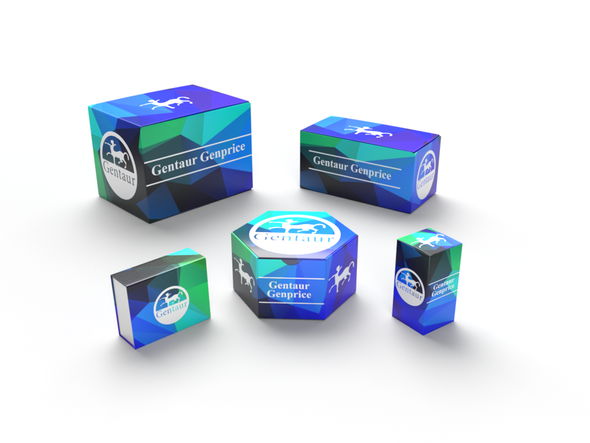LBD
TM173 Antibody (C-term) [APR06198G]
- SKU:
- LBD-APR06198G
- Availability:
- Usually ships in 5 working days
Description
TM173 Antibody (C-term) [APR06198G] | Gentaur UK, US & Europe Distribution
Product Category: Polyclonal Antibodies
Host: Rabbit
Species Reactivity: H
Specificity: This TM173 antibody is generated from rabbits immunized with a KLH conjugated synthetic peptide between 311-340 amino acids from the C-terminal region of human TM173.
Cellular Localisation: Endoplasmic reticulum membrane; Multi-pass membrane protein {ECO:0000255, ECO:0000269|PubMed:30842659, ECO:0000269|PubMed:32690950}. Cytoplasm, perinuclear region. Endoplasmic reticulum-Golgi intermediate compartment membrane; Multi-pass membrane protein {ECO:0000255, ECO:0000269|PubMed:32690950} Cytoplasmic vesicle, autophagosome membrane; Multi-pass membrane protein. Mitochondrion outer membrane; Multi-pass membrane protein. Cell membrane {ECO:0000250|UniProtKB:Q3TBT3}; Multi-pass membrane protein. Note=In response to double-stranded DNA stimulation, translocates from the endoplasmic reticulum through the endoplasmic reticulum-Golgi intermediate compartment and Golgi to post-Golgi vesicles, where the kinase TBK1 is recruited (PubMed:19433799, PubMed:30842659, PubMed:30842653, PubMed:29694889) . Upon cGAMP-binding, translocates to the endoplasmic reticulum-Golgi intermediate compartment (ERGIC) in a process that is dependent on COPII vesicles; STING1-containing ERGIC serves as a membrane source for LC3 lipidation, which is a key step in autophagosome biogenesis (PubMed:30842662)
Molecular Weight: 42193
Clone: Polyclonal
Gene Name: STING
Gene ID: 340061
Function: Facilitator of innate immune signaling that acts as a sensor of cytosolic DNA from bacteria and viruses and promotes the production of type I interferon (IFN-alpha and IFN-beta) (PubMed:18724357, PubMed:18818105, PubMed:19433799, PubMed:19776740, PubMed:23027953, PubMed:23910378, PubMed:23747010, PubMed:30842659) . Innate immune response is triggered in response to non-CpG double-stranded DNA from viruses and bacteria delivered to the cytoplasm (PubMed:26300263) . Acts by binding cyclic dinucleotides: recognizes and binds cyclic di-GMP (c- di-GMP), a second messenger produced by bacteria, and cyclic GMP-AMP (cGAMP), a messenger produced by CGAS in response to DNA virus in the cytosol (PubMed:21947006, PubMed:23258412, PubMed:23707065, PubMed:23722158, PubMed:26229117, PubMed:23910378, PubMed:23747010, PubMed:30842659) . Upon binding of c-di-GMP or cGAMP, STING1 oligomerizes, translocates from the endoplasmic reticulum and is phosphorylated by TBK1 on the pLxIS motif, leading to recruitment and subsequent activation of the transcription factor IRF3 to induce expression of type I interferon and exert a potent anti-viral state (PubMed:22394562, PubMed:25636800, PubMed:30842653) . In addition to promote the production of type I interferons, plays a direct role in autophagy (PubMed:30568238, PubMed:30842662) . Following cGAMP-binding, STING1 buds from the endoplasmic reticulum into COPII vesicles, which then form the endoplasmic reticulum-Golgi intermediate compartment (ERGIC) (PubMed:30842662) . The ERGIC serves as the membrane source for WIPI2 recruitment and LC3 lipidation, leading to formation of autophagosomes that target cytosolic DNA or DNA viruses for degradation by the lysosome (PubMed:30842662) . The autophagy- and interferon- inducing activities can be uncoupled and autophagy induction is independent of TBK1 phosphorylation (PubMed:30568238, PubMed:30842662) . Autophagy is also triggered upon infection by bacteria: following c-di- GMP-binding, which is produced by live Gram-positive bacteria, promotes reticulophagy (By similarity) . Exhibits 2', 3' phosphodiester linkage- specific ligand recognition: can bind both 2'-3' linked cGAMP (2'-3'- cGAMP) and 3'-3' linked cGAMP but is preferentially activated by 2'-3' linked cGAMP (PubMed:26300263, PubMed:23910378, PubMed:23747010) . The preference for 2'-3'-cGAMP, compared to other linkage isomers is probably due to the ligand itself, whichs adopts an organized free- ligand conformation that resembles the STING1-bound conformation and pays low energy costs in changing into the active conformation (PubMed:26150511) . May be involved in translocon function, the translocon possibly being able to influence the induction of type I interferons (PubMed:18724357) . May be involved in transduction of apoptotic signals via its association with the major histocompatibility complex class II (MHC-II) (By similarity) .
Summary: Tissue Location: Ubiquitously expressed. Expressed in skin endothelial cells, alveolar type 2 pneumocytes, bronchial epithelium and alveolar macrophages.
Form: Purified polyclonal antibody supplied in PBS with 0.09% (W/V) sodium azide. This antibody is purified through a protein A column, followed by peptide affinity purification.
Storage: Maintain refrigerated at 2-8°C for up to 2 weeks. For long term storage store at -20°C in small aliquots to prevent freeze-thaw cycles.
Application: IHC-P, FC, WB
Dilution: WB--1:1000 IHC-P--1:100~500 FC--1:10~50
Synonyms: Stimulator of interferon genes protein, hSTING, Endoplasmic reticulum interferon stimulator, ERIS, Mediator of IRF3 activation, hMITA, Transmembrane protein 173, TMEM173, ERIS, MITA, STING

![TM173 Antibody (C-term) [APR06198G] TM173 Antibody (C-term) [APR06198G]](https://cdn11.bigcommerce.com/s-1rdwiq712m/images/stencil/608x608/products/59860/60164/gentaur-genprice__26005.1661610467__29809.1661628092__75433.1661676199__77988.1661684280__64362.1661692443__71027.1661862542.png?c=1)


![PGA5 Antibody (C-term) [APR09066G] PGA5 Antibody (C-term) [APR09066G]](https://cdn11.bigcommerce.com/s-1rdwiq712m/images/stencil/590x590/products/54355/463527/gentaur-genprice__26005.1661610467__29809.1661628092__75433.1661676199__77988.1661684280__64362.1661692443__02085.1662049603__45075.1662119302__91744.1662191540__21580.1662291419__85496.1663322517.png?c=1)
![hCG_2024410 Antibody (C-term) [APR16660G] hCG_2024410 Antibody (C-term) [APR16660G]](https://cdn11.bigcommerce.com/s-1rdwiq712m/images/stencil/590x590/products/54343/463515/gentaur-genprice__26005.1661610467__29809.1661628092__75433.1661676199__77988.1661684280__64362.1661692443__02085.1662049603__45075.1662119302__91744.1662191540__21580.1662291419__46527.1663322512.png?c=1)
![STIM1 Antibody (C-term) [APR10301G] STIM1 Antibody (C-term) [APR10301G]](https://cdn11.bigcommerce.com/s-1rdwiq712m/images/stencil/590x590/products/54693/463865/gentaur-genprice__26005.1661610467__29809.1661628092__75433.1661676199__77988.1661684280__64362.1661692443__02085.1662049603__45075.1662119302__91744.1662191540__21580.1662291419__50856.1663322655.png?c=1)